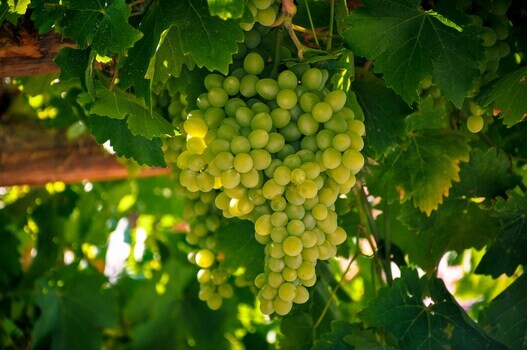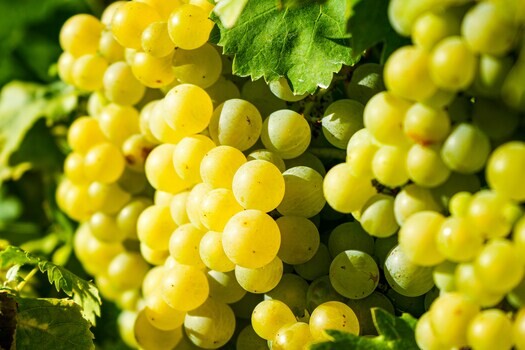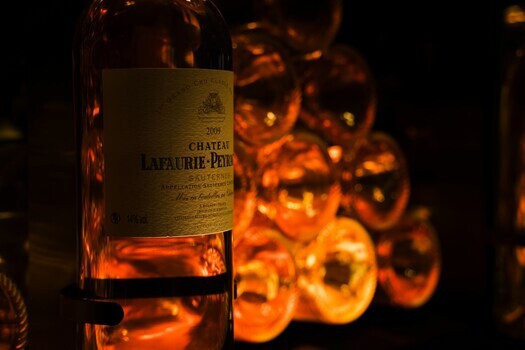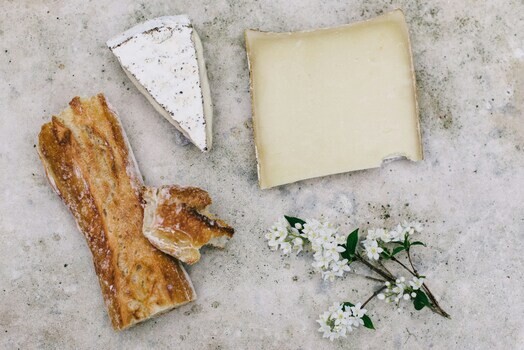Sauvignon Blanc: A Short Primer
Sauvignon Blanc: A Short Primer
Once upon a time, this blog opened with “Sauvignon blanc's popularity seems to grow and grow, with no signs of this changing just yet. As the British palate has developed a taste for drier, more aromatic whites, sauvignon blanc has come into its own. Few varieties can match its fragrant, zesty and refreshing youthful appeal.”
Well, suffice it to say that since then, this white grape’s popularity has grown and grown. And grown. And not 'seems' – undoubtedly 'has'. With no signs of this changing just yet either. Indeed, a quick perusal of the dozen-and-a-half options available on any supermarket’s shelves confirms it.
Loire Valley sauvignon blanc
What also has no signs of changing just yet is the historic disagreement I mentioned over whether sauvignon blanc’s true home is in Bordeaux or the Loire Valley. And that whichever the case, for some time now, the latter has undoubtedly remained where the varietal is found at its vibrant best – most notably in the appellations of Sancerre and Pouilly-Fumé. Here, some of the world’s most distinctive expressions are produced.

Because here, on Sancerre’s free draining, calcareous, limestone and flinty silex soils, sauvignon blanc vines extract nutrients from these soil compositions and present them in exquisite, mineral-laden wines that in warmer years exhibit ripe, yet discreet, tropical fruit flavours, when in cooler years offer more of a gooseberry character. And always with its hallmark of racy, zippy acidity, precision, elegance and thrilling minerality.
Across the river, Pouilly-Fumé’s predominantly flint-rich terroir imparts a slightly smokier, gunflint character and a subtly broader texture to distinguish what is otherwise an almost identical spectrum of fruit flavours.
In another much larger Loire Valley appellation, Touraine, with its mix of clay, sand, and gravel, sauvignon blanc renders fresher, fruit-driven styles with a softer edge, and is where some of the best value-for-money options of classic regional varietal expression are to be found. Which is why I strongly recommend Domaine Bellevue’s Sauvignon de Touraine, where you'll find all the delicacy, elegance and drinking pleasure the more famous regions offer, but at a far pocket-friendlier price.
But whichever the appellation, each reflects its geology: tension and elegance in Sancerre, depth and smoky complexity in Pouilly-Fumé, and accessible charm in Touraine — together showcasing the Loire’s mastery of Sauvignon Blanc in pure, terroir-driven form.
Kiwi sauvignon blanc
However, for those liking their sauvignon with a little more pungency and intensity there is New Zealand. Incredibly, this single variety is almost solely responsible for raising the New Zealand wine industry to such heights as it has now reached – due in no small part to the popularity of the Marlborough region in particular. (Other renowned regions include Hawke’s Bay, Waipara and Nelson.)
It’s where sauvignon bursts with gooseberry, greengage and passion fruit, all infused with a distinctive elderflower note that can develop more towards asparagus and cut grass. For an explicitly delicious stylistic take, try Greenhough’s River Garden Sauvignon Blanc (Nelson).
Purists will say that the subtlety of French expressions and their greater minerality make them superior wines, but for many, the all round intensity of Kiwi sauvignon is just too intriguing to pass up.
Popular sauvignon blanc-producing regions of the world
Sauvignon's uninterrupted growth in popularity means that since posting my original blog, either its tendrils have reached places further afield or extant vineyard areas there have increased.
Chile & Argentina
In Chile (where it’s been since the mid-80s but is now the second most planted varietal), sauvignon blanc thrives in its cool-climate coastal valleys — Casablanca, Leyda, San Antonio, and Aconcagua Costa — where cold Pacific breezes and morning fog remain the principal elements for ensuring a brisk, vibrant acidity in their wines. It’s where granitic and clay-limestone soils deliver classic sauvignon expression with citrus, green apple, and herbal lift, often with a subtle saline edge.
For a simple, highly-quaffable, hugely versatile and great-value option, try Ladera Verde’s Central Valley Sauvignon Blanc.
On the leeside of the Andes in Argentina, plantings flourish in high-altitude sites like Mendoza’s Uco Valley, where rocky alluvial soils and large diurnal temperature swings produce elegant, mineral-driven wines. Which is precisely where Bodegas Penedo Borges’ produce their ‘Cepas’ Single Vineyard Sauvignon Blanc, of which citrus, white peach, subtle tropical notes and mouthwatering freshness so gratifyingly epitomise this Andean take on the varietal.

South Africa
Indeed, given the popularity in South Africa of chenin blanc – another crisp, dry, minerally-driven Loire Valley native – producers here have naturally cottoned on to sauvignon blanc’s potential. They continue to realise it. And although the varietal has similarly been planted here since the late 19th century, only more recently have more cool-climate producers begun to tweak their production methods to capture more of the grape’s aromatic character.
Stylistically, this has meant a range of expressions from zesty, citrus-led freshness to more textural, barrel-aged expressions echoing top Loire cuvées, offering both outstanding value and decent cellaring potential. The most popular growing regions are Constantia, Durbanville, Elgin, and Walker Bay.
And for a taste of Walker Bay, try Sumaridge’s Klip Klop cuvée in which a small percentage of sémillion (see Bordeaux Blanc below) adds a delightful, contrasting richness to sauvignon’s inherent, aromatic crispness and vibrancy.
Bordeaux Blanc
Dry sauvignon/sémillon
Speaking of sémillon, it would be remiss not to highlight one of the truly great, historic traditions in sauvignon blanc production – Bordeaux Blanc. Which brings us back to that ‘argument’ I mentioned earlier.
In fact, there are two Bordelais traditions – dry and sweet. The first, a dry, crisp, refreshing and often very ageworthy blend of sauvignon and the local sémillon varietal (usually 5%-10%) that is most commonly found in the Graves, Pessac-Léognan and Entre Deux Mers appellations of Bordeaux.
Typically, dry Bordeaux Blancs are deeply aromatic, offering aromas and flavours of red grapefruit, citrus zest, white peach, ripe pineapple, with added textural creaminess, weight and waxy nuances thanks to the sémillon component.
For a sensuous, hallmark expression, look no further than Château Bastor-Lamontagne.
Sweet sauvignon/sémillon
Now for the sweet. Wines world-famously so, these luxurious cuvées of Barsac & Sauternes. Cuvées made from sauvignon blanc, sémillon and to a lesser degree muscadelle that have been affected by botrytis cinerea, or ‘noble rot’. Here, a beneficial fungus that pierces grape skins, causing water to evaporate and sugars, acids, and flavours to concentrate.

Carefully hand-harvested in autumn and in multiple passes, the shrivelled grapes are gently pressed, then fermented slowly to retain natural sweetness. The result is lusciously rich, golden wines with layers of honey, apricot, citrus, marmalade and spice, in all of which sauvignon’s indomitable acidity provides a capacity for decades of graceful ageing.
Sauvignon blanc with cuisine
Finally, food. Because sauvignon blanc is an indispensable classic when pairing wine with cuisine. Just about any form of seafood and crustacea – oysters, mussels, prawns, scallops, clams, crab, calamari – absolutely adore being with sauvignon blanc.
So do white fish: hake, bream, sea bass, sole, halibut, sardines… Fish ‘n’ chips – perfection, where high acidity cuts through grease and cleanses the palate.
Baked, fried or grilled, they all go effortlessly with a generous, slightly chilled glass of sauvignon blanc. And if you fancy a bit of exotic spice and/or chilli heat, reach for riper, more tropically-fruity styles as you’ll find in New Zealand.
Now the cheeseboard, on which the superstar with sauvignon is indisputably goats’ cheese. None is and will ever be so beautifully matched as Chavignol and Sancerre/Pouilly-Fumé, where sleek, elegant citrus zest and mineral-nuanced stone fruit, flint and fresh grass aromas seamlessly mingle with the creamy, salty, earthy herbaceousness of artisanally-made goats’ cheese.

Or indeed with any similarly tangy, salty, crumbly styles such as feta, Lancashire, Caerphilly or haloumi. As for those bottles of sweet sauvignon, remember that Sauternes isn’t just for dessert. It, too, is most welcome on the cheeseboard. Because sweetness also loves salty creaminess, it’s why that unctuously honeyed, luxurious liquid is just as delectable with Stilton as it is with an apricot tart or baklava selection.
Wine-pairing Guides
But don’t stop there. Make a far more expansive investigation into such combinations by way of our very handy Wine & Cheese Pairing Guide.
Or why not go for a full-on exploration of all things wine-and-food? Do it here. Check out our Mr.Wheeler Wine & Food Pairings Guide and you’ll not only take your penchant for sauvignon to the next level, but also discover other similar varietals and traditions to take it beyond.
Top tip – ‘If you like this then you’ll love…’
In the meantime, if you not tried them, here are some of those ‘similar’ varietals to broaden your options for that penchant:
Albariño
Native to Galicia in northwestern Spain and celebrated for its vibrant freshness and brisk, coastal character. Expect zesty citrus, peach, and apricot flavours, with a saline minerality that resonates with the Atlantic. Crisp and refreshing, it’s a natural partner for seafood. Find one here.
Chenin Blanc
Now grown widely and incredibly versatile, ranging from bone-dry to lusciously sweet. It typically shows apple, pear, quince, and honeyed notes, often with a floral lift and bright acidity. Its high ageing potential allows complex layers of spice, nuts, and lanolin to develop over time. Find one here.
Soave
From Veneto in northern Italy and made primarily from the garganega grape. Light and elegant, it offers flavours of white peach, almond, and citrus, underpinned by a subtle mineral edge. Its clean, refreshing style makes it an ideal aperitif or pairing with lighter dishes and seafood. Find one here.
Gavi di Gavi
Made from the cortese grape in Piemonte and prized for its delicacy and finesse. Typically, it offers crisp citrus, green apple, and floral notes, with a mouth-watering minerality on the finish. Its refined, zesty profile makes it a classic match for seafood and antipasti. Find one here.
Grüner Veltliner
Austria’s flagship white grape and is known for its lively acidity and signature peppery kick. It typically displays flavours of lime, green apple, and stone fruits, often with a streak of wet stone minerality. Fresh, versatile, and food-friendly, it pairs beautifully with everything from Asian cuisine to classic Austrian dishes. Fine one here.
Finally, you can learn more about some of the world’s most popular grapes by digging into our handy Wine Varietals Guide, 2025.
Happy drinking!
— David Adamick, Mr.Wheeler Wine
